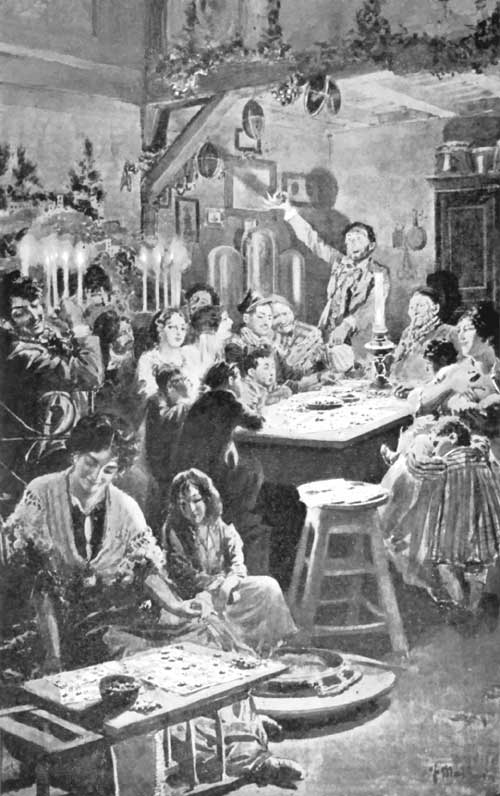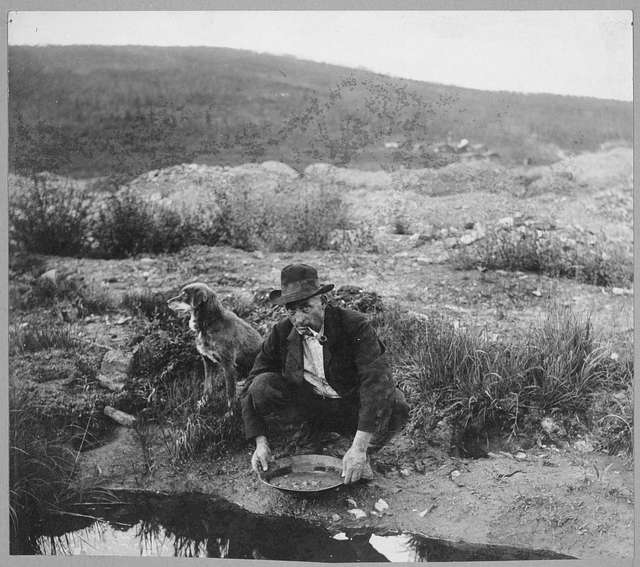Hauflin
They are one of the original people of the northern lands and call themselves The People, but most other groups refer to them in a number of ways; including: The Small People of the Plains, halflings, and several terms used by uncouth individuals that are not suitable for polite conversation.
Hauflin live in sprawling placer mining communities in the hill region of the banks of the White River and the tributaries that flow into it. They pan and sluice for gold in the rivers and collect and cut precious gemstones. Master level lapidary artisans and metalsmiths, their jewelry and fine creations are highly prized by the nobility and wealthy merchants of all of the known kingdoms. Some of the most valuable cultural exports are the intricate faux egg creations crafted for the celebration of the coming of spring.
The Hauflin are so skilled in the art of gold and silver smithing, that they have long been the official minters for coins issued by the royal treasury and fine trade houses in the Northern Kingdom.
Merchants will pay handsomely for Hauflin-made jewelry, and treasure hunters and thieves have been known to seek out Hauflin burial sites in an effort to uncover priceless treasures long buried in the underground crypts where the Hauflin inter their dead.
Hauflin Work Dogs
The Hauflin keep dogs that have been bred for generations as sled runners, pulling Hauflin sleds across the open fields in the winter months. The bond between a Hauflin and their dogs is a life-long friendship and the dogs are treated as members of the family, living in the homes with the Hauflin. The dogs of the Hauflin are known for their intelligence and loyalty. So much so that some Hauflin have been known to train dogs for more than sled pulling or hunting, training companion service dogs that help their owners. Although it is rare for such service dogs to be given to any outside the Hauflin communities, those who are so fortunate as to be gifted such loyal companions prize them highly.Culture
Average technological level
Placer mining (mostly gold panning and sluice boxes, some shallow mines), metal smithing (mostly gold and silver), lapidary work (polishing and cutting). Water and wind mills for the grinding of wheat.
Homes are stone and wood with sod or wood shingle rooves. Wood heat, beeswax candles and oil lamps.
Common Customs, traditions and rituals
Winter Solstice
The winter solstice is observed as a night of celebration among the Hauflin. Their homes are cheerfully decorated and lit with a multitude of candles during the weeks before and after the winter solstice. It is customary to welcome travelers seeking shelter from the cold during this time, and no one is turned away from Hauflin homes and taverns, no matter the lateness of the hour. Any home that receives visitors on this night is thought to hold good luck throughout the year, and gifts are given to visitors in thanks for the good luck they bring the home.Spring Celebration
In the spring the Hauflins celebrate with grand outdoor parties similar in grandeur to their festive winter solstice celebrations, but the decorations are bright streamers of colorful ribbons, wreaths and crowns of spring flowers, and colorful dyed eggs. The gifts they give to others in the spring are intricately patterned eggs that have been boiled or blown out. The kinds of eggs may vary, but are most often water fowl eggs such as swans, ducks, or wild geese. This is also the time of year when the master metalsmiths and jewelers craft extravagant gemstone-encrusted metal egg boxes that are prized world-wide by the wealthy and nobility alike.Common Myths and Legends
The Hauflin have a creation myth that tells of their having come out of the lands beyond the fire mountains in the west, across a vast sea that is no more, before the world that is now known was fully formed. (This is the oral history of their having crossed the inland sea to the east before it drained, leaving behind a vast desert and cutting the great chasm that now makes up the northern edge of the Northlands.)
Historical figures
The most prominent figure in history according to the Hauflin is a great hero that lead them across the sea that is no more and through the mountains to settle in the plains. The figure has taken on more of a legendary aura over the years and is represented in their oral history and artwork as having been born of the ancient gods and the gold of the earth.
Physical Description
Average Height: 3' 6" (106 cm)
Average Weight: 66 lbs (30 kg)
The diminutive Hauflins are only slightly more than half the height of the average human and are the smallest known of the humanoids.
Encompassed species
Related Myths
Remove these ads. Join the Worldbuilders Guild













Comments
Author's Notes
Hauflin
https://www.dsl.ac.uk/entry/snd/halflin
A Scottish word: HALFLIN, n., adj. Also haflen, -line, halfling, -lan(g), haf(f)lin, hauflin.
Meaning:
- I. n. 1. A half-grown boy, adolescent youth; often applied to a lad engaged in farm work
- 2. Specif.: with reference to a young farm-worker.
The Hauflins in Agea are loosely based on Homo floresiensis - they are a "what if..." visualization of if H. floresiensis had evolved alongside the other human types. https://humanorigins.si.edu/evidence/human-fossils/species/homo-floresiensis For the eggs created in the spring, think pysanky and Faberge - such as the https://en.wikipedia.org/wiki/Faberg%C3%A9_egg#/media/File:Kelch_Rocaille_Egg.jpgAgs. 1795 Stat. Acc.1 XII. 304:
Wages of a man servant . . . ¥10. 0 0. — of a halflin (between man and boy) ¥5. 0. 0.)
Sc. 1829 G. Robertson Recollections 110:
There were commonly two young men, as gadmen, or plough-drivers, and a halflan callant, or sturdy boy, as cowherd.